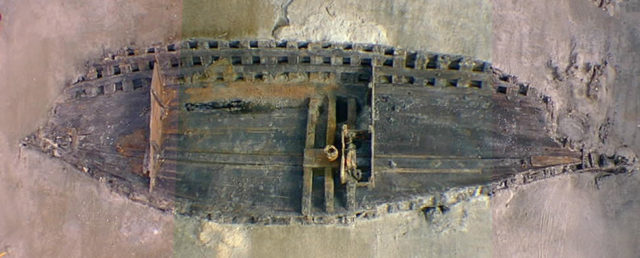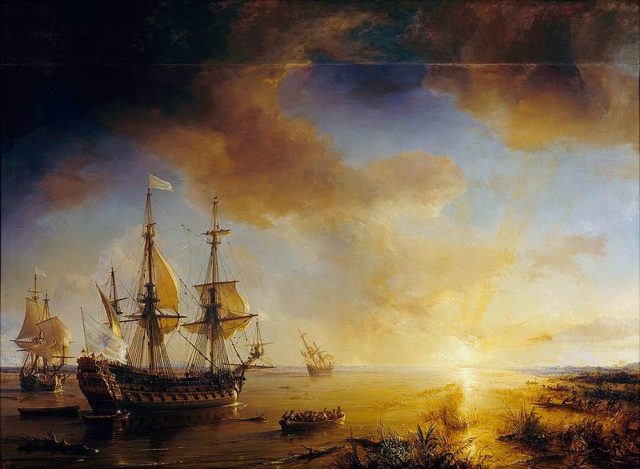The La Belle was a French frigate that had been carrying French colonists to the New World but, unfortunately, it did not make it to its destination; it sank in a storm just off the Texas coast 300 years ago. Archaeologists have now finished restoring the partial remains of the hull, and the results will be on display in Austin, Texas, at the Bullock Texas State History Museum.
When the sunken ship was excavated, it was found that the ship had been carrying merchandise. It would have been carrying anything that the colonists thought they would need to set up a colony in the New World and would carry on trade with the colonies once they were settled. Pottery, knives, glass beads, brass pins, and bottles were found in the wreck. Many personal items were also discovered, such as combs, clothing, and jewelry. Weapons were found scattered through the ruins; as long as long guns, sword parts, lead shots, and three bronze cannons.

The La Belle was a 54-foot long frigate built of oak. She sank in 1686, during an expedition by the French colonists, led by the famed Mississippi explorer, Rene-Robert Cavelier Sieur de La Salle.
It is thought that faulty maps led to the ship being 400 miles away from where it had planned to go; instead of being at the Mississippi Delta, the ship soon found itself in trouble in a storm off the Texas coastline.


The sinking of the ship is one of the theories as to why the French didn’t explore further into Texas and the American Southwest. La Salle did manage to create Fort St. Louis, a small settlement in Matagorda Bay.
It was a short-lived colony which managed to increase not French presence in the area, but that of the Spanish, who wanted to ward off a French territorial expansion. La Salle traveled the Mississippi River south to the Gulf of Mexico and claimed all the land along the river for France in 1682. He was the first European to have traveled the river, Mail Online reported.

The nearly intact hull had been preserved in deep mud in the Matagorda Bay. Present-day researchers built a dam around it to keep out the tide waters and they pumped the area dry. Only then were they able to retrieve the hull from its muddy grave.
Read another story from us: Restoration finished on a French ship that sank 300 years ago
The keel and other parts of the structure of the ship had been discovered in 1995 by archaeologists from the Texas Historical Commission. The 600 waterlogged pieces were taken in 2012 to Texas A&M University, where the timber was carefully stored at minus 60 degrees in the world’s largest archaeological freeze-dryer. With this process, experts could safely remove the three centuries of moisture from the timber without damaging it further.
